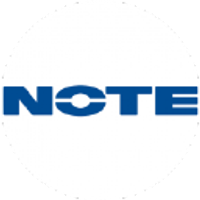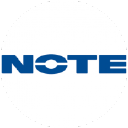
Note AB (publ)
STO:NOTE


| US |

|
Johnson & Johnson
NYSE:JNJ
|
Pharmaceuticals
|
| US |

|
Berkshire Hathaway Inc
NYSE:BRK.A
|
Financial Services
|
| US |

|
Bank of America Corp
NYSE:BAC
|
Banking
|
| US |

|
Mastercard Inc
NYSE:MA
|
Technology
|
| US |

|
UnitedHealth Group Inc
NYSE:UNH
|
Health Care
|
| US |

|
Exxon Mobil Corp
NYSE:XOM
|
Energy
|
| US |

|
Pfizer Inc
NYSE:PFE
|
Pharmaceuticals
|
| US |

|
Palantir Technologies Inc
NYSE:PLTR
|
Technology
|
| US |

|
Nike Inc
NYSE:NKE
|
Textiles, Apparel & Luxury Goods
|
| US |

|
Visa Inc
NYSE:V
|
Technology
|
| CN |

|
Alibaba Group Holding Ltd
NYSE:BABA
|
Retail
|
| US |

|
JPMorgan Chase & Co
NYSE:JPM
|
Banking
|
| US |

|
Coca-Cola Co
NYSE:KO
|
Beverages
|
| US |

|
Walmart Inc
NYSE:WMT
|
Retail
|
| US |

|
Verizon Communications Inc
NYSE:VZ
|
Telecommunication
|
| US |

|
Chevron Corp
NYSE:CVX
|
Energy
|
Utilize notes to systematically review your investment decisions. By reflecting on past outcomes, you can discern effective strategies and identify those that underperformed. This continuous feedback loop enables you to adapt and refine your approach, optimizing for future success.
Each note serves as a learning point, offering insights into your decision-making processes. Over time, you'll accumulate a personalized database of knowledge, enhancing your ability to make informed decisions quickly and effectively.
With a comprehensive record of your investment history at your fingertips, you can compare current opportunities against past experiences. This not only bolsters your confidence but also ensures that each decision is grounded in a well-documented rationale.
Do you really want to delete this note?
This action cannot be undone.

| 52 Week Range |
145.6
200.6
|
| Price Target |
|
We'll email you a reminder when the closing price reaches SEK.
Choose the stock you wish to monitor with a price alert.

|
Johnson & Johnson
NYSE:JNJ
|
US |

|
Berkshire Hathaway Inc
NYSE:BRK.A
|
US |

|
Bank of America Corp
NYSE:BAC
|
US |

|
Mastercard Inc
NYSE:MA
|
US |

|
UnitedHealth Group Inc
NYSE:UNH
|
US |

|
Exxon Mobil Corp
NYSE:XOM
|
US |

|
Pfizer Inc
NYSE:PFE
|
US |

|
Palantir Technologies Inc
NYSE:PLTR
|
US |

|
Nike Inc
NYSE:NKE
|
US |

|
Visa Inc
NYSE:V
|
US |

|
Alibaba Group Holding Ltd
NYSE:BABA
|
CN |

|
JPMorgan Chase & Co
NYSE:JPM
|
US |

|
Coca-Cola Co
NYSE:KO
|
US |

|
Walmart Inc
NYSE:WMT
|
US |

|
Verizon Communications Inc
NYSE:VZ
|
US |

|
Chevron Corp
NYSE:CVX
|
US |
This alert will be permanently deleted.
Note AB (publ)
Note AB engages in the electronics manufacturing services. The company is headquartered in Stockholm, Stockholm and currently employs 1,346 full-time employees. The company went IPO on 2004-06-23. The Company’s operational segments are divided into two categories: Nearsourcing Centres and Industrial Plants. The Nearsourcing Centres segment comprises selling facilities in Sweden, Norway, Finland and the United Kingdom (UK), which provide development-oriented work in relationship with customers. The Industrial Plants area includes manufacturing units in Estonia and China. The firm specializes in the production of printed circuit board assemblies (PCBAs), sub-assemblies and box build products, as well as in the delivery of product and test management, end of life management, and spare parts, among others. Furthermore, It operates through a number of subsidiaries, such as NOTE Components AB, NOTE International AB, NOTE UK Ltd, NOTE Norge AS, NOTE Hyvinkaa Oy and IONOTE Electronics (Dongguan) Ltd.

Note AB engages in the electronics manufacturing services. The company is headquartered in Stockholm, Stockholm and currently employs 1,346 full-time employees. The company went IPO on 2004-06-23. The Company’s operational segments are divided into two categories: Nearsourcing Centres and Industrial Plants. The Nearsourcing Centres segment comprises selling facilities in Sweden, Norway, Finland and the United Kingdom (UK), which provide development-oriented work in relationship with customers. The Industrial Plants area includes manufacturing units in Estonia and China. The firm specializes in the production of printed circuit board assemblies (PCBAs), sub-assemblies and box build products, as well as in the delivery of product and test management, end of life management, and spare parts, among others. Furthermore, It operates through a number of subsidiaries, such as NOTE Components AB, NOTE International AB, NOTE UK Ltd, NOTE Norge AS, NOTE Hyvinkaa Oy and IONOTE Electronics (Dongguan) Ltd.
Sales: Q2 sales were SEK 980 million, in line with expectations, with a SEK 35 million negative currency effect.
Profitability: EBIT margin was 9.6%, similar to Q1, showing continued strong profitability despite flat sales.
EPS: Earnings per share increased 7% year-over-year to SEK 2.65.
Cash Flow: Operational cash flow year-to-date was SEK 260 million, exceeding the dividend paid and indicating strong financial health.
Guidance: Full-year sales growth is now guided at 0–5%, lowered mainly due to FX impacts; 9.5–10.5% EBIT margin expected to be maintained.
Order Backlog: Backlog increased 6% from Q1 and is up quarter-over-quarter, signaling improving demand.
Growth Outlook: 5–10% sales growth expected in the second half of the year, with strongest growth in Greentech and Security & Defense segments.
M&A Activity: At least one acquisition is targeted for this year; more active M&A dialogue as valuations normalize.

































